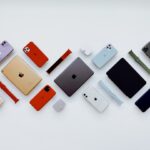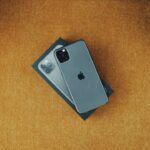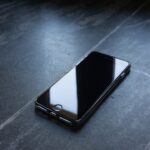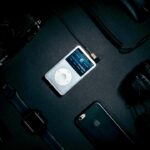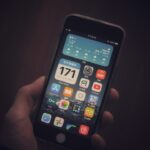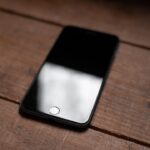In the realm of global politics, few figures are as enigmatic as Kim Jong Un, the Supreme Leader of North Korea. His leadership style, characterized by a blend of authoritarianism and a penchant for spectacle, has drawn international scrutiny and fascination. Among the many aspects of his public persona, one particularly intriguing element is his alleged use of an iPhone.
This seemingly innocuous device, emblematic of Western technology and culture, raises questions about the intersection of modern communication tools and the rigidly controlled environment of North Korea. The notion that a leader known for his isolationist policies might utilize a product from a company like Apple invites speculation about the implications for both his regime and the broader geopolitical landscape. The iPhone, a symbol of connectivity and modernity, stands in stark contrast to the isolationist policies that define North Korea.
While the country has made strides in developing its own technology, the idea that Kim Jong Un would rely on a device that connects to global networks is both perplexing and revealing. This article delves into the various dimensions of Kim Jong Un’s purported iPhone usage, exploring the rumors and speculations surrounding it, analyzing visual evidence, and considering the broader implications for North Korea and its relationship with the outside world.
Key Takeaways
- Kim Jong Un’s use of an iPhone has sparked speculations and rumors about his access to technology and the potential risks involved.
- Photos and videos allegedly showing Kim Jong Un with an iPhone have been analyzed to determine the authenticity of his usage.
- The potential risks and consequences of Kim Jong Un using an iPhone are significant, given North Korea’s strict control over information and communication devices.
- Comparisons to other world leaders and their use of technology highlight the unique political landscape in North Korea and the influence of Western technology and culture.
- The impact of Kim Jong Un’s iPhone usage on North Korean citizens and its implications for international relations and diplomacy are subjects of concern and interest.
Speculations and Rumors Surrounding Kim Jong Un’s iPhone Usage
The Image of Modernity
Some sources suggest that Kim’s affinity for the device stems from a desire to project an image of modernity and sophistication. In a country where information is tightly controlled, the use of a globally recognized smartphone could serve as a tool for image management, allowing Kim to present himself as a leader who is in touch with contemporary trends.
A Symbol of Power and Influence
This speculation is further amplified by reports that Kim has been seen using the device during public appearances, leading to questions about whether he is indeed utilizing its full capabilities or merely using it as a prop. Moreover, there are suggestions that Kim’s use of an iPhone may be more than just a personal preference; it could also reflect a strategic decision to engage with technology that symbolizes power and influence.
Authority and Compromise
In a regime where maintaining an image of strength and control is paramount, adopting such technology could be interpreted as an attempt to align with global standards while simultaneously reinforcing his authority domestically. However, this raises further questions about the extent to which Kim can truly engage with such technology without compromising the very principles of his regime.
Analysis of Photos and Videos Allegedly Showing Kim Jong Un with an iPhone
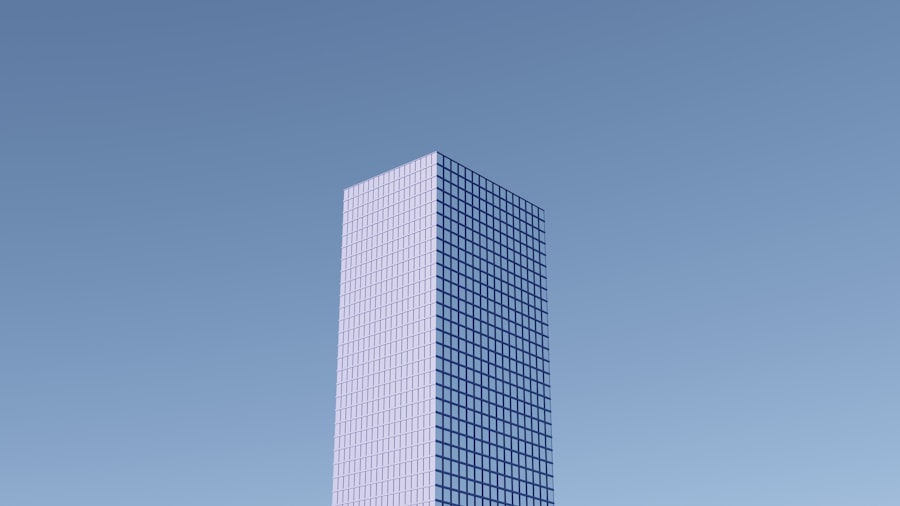
Visual evidence plays a crucial role in substantiating claims about Kim Jong Un’s use of an iPhone. Various photographs and videos have surfaced over the years that appear to show him handling the device. In some instances, these images depict him engaged in discussions with aides or during public events, where he seems to be using the phone for communication or information gathering.
Analysts have scrutinized these visuals for clues about the nature of his interactions with technology. For instance, in one widely circulated image from a military parade, Kim is seen holding what appears to be an iPhone while reviewing troops, prompting discussions about whether he is using it to communicate with military leaders or simply projecting an image of modern leadership. However, skepticism abounds regarding the authenticity and context of these images.
Some experts argue that the presence of an iPhone in Kim’s hand may not necessarily indicate active usage; it could be a calculated display intended to convey a message of modernity without implying genuine engagement with global communication networks. Additionally, there are concerns about the security implications of using such devices in a regime known for its paranoia regarding surveillance and espionage. The analysis of these images thus reveals not only the complexities surrounding Kim’s relationship with technology but also highlights the broader narrative of control and perception that permeates North Korean society.
Potential Risks and Consequences of Kim Jong Un Using an iPhone
| Category | Potential Risks and Consequences |
|---|---|
| Security | Increased risk of hacking and espionage |
| Privacy | Potential leakage of sensitive information |
| International Relations | Possible diplomatic tensions with other countries |
| Regulation | Potential violation of sanctions and trade restrictions |
| Reputation | Perception of hypocrisy and double standards |
The potential risks associated with Kim Jong Un’s use of an iPhone are multifaceted and significant. First and foremost, there is the issue of security. North Korea is notorious for its stringent control over information flow, both within its borders and in relation to external entities.
The use of a smartphone that connects to global networks poses inherent risks, including the possibility of interception by foreign intelligence agencies. If Kim were to utilize an iPhone for sensitive communications, it could expose him to vulnerabilities that his regime has historically sought to avoid at all costs. Furthermore, there are implications for internal power dynamics within North Korea.
The introduction of Western technology into Kim’s personal sphere could create friction among party elites who may view such practices as undermining traditional values or authority. The perception that their leader is engaging with foreign technology might lead to dissent or challenges to his leadership from hardliners within the regime who prioritize ideological purity over modernity. This internal conflict could destabilize an already precarious political landscape, where loyalty to Kim is paramount but may be tested by perceptions of weakness or compromise.
The Role of Technology in North Korea’s Political Landscape
Technology plays a complex role in North Korea’s political landscape, serving both as a tool for control and as a potential catalyst for change. The regime has invested heavily in developing its own technologies, including intranet systems that allow limited access to information while maintaining strict oversight. This controlled environment enables the government to disseminate propaganda while stifling dissenting voices.
However, the emergence of smartphones and other communication devices presents challenges to this model. The introduction of foreign technology into North Korea could lead to unintended consequences. While the regime seeks to maintain its grip on power through information control, increased access to global communication networks could empower citizens with knowledge about the outside world.
This exposure has the potential to foster dissent and challenge the regime’s narrative. In this context, Kim Jong Un’s alleged use of an iPhone may reflect not only personal preferences but also an acknowledgment of the changing dynamics brought about by technological advancements.
Comparisons to Other World Leaders and Their Use of Technology

When examining Kim Jong Un’s relationship with technology, it is instructive to compare him with other world leaders who have embraced digital communication tools. For instance, leaders like Barack Obama and Donald Trump have utilized social media platforms like Twitter to engage directly with their constituents and shape public discourse. In contrast, Kim’s approach appears more cautious and calculated, reflecting the unique challenges posed by his authoritarian regime.
While many leaders leverage technology as a means of transparency and engagement, Kim’s use of an iPhone—if indeed he uses one—could be seen as an attempt to project an image rather than foster genuine communication. The stark difference in how technology is employed by democratic leaders versus authoritarian figures underscores the varying motivations behind their engagement with modern tools. In this light, Kim’s alleged use of an iPhone may serve more as a symbol than as a functional means of communication.
North Korea’s Strict Control over Information and Communication Devices
North Korea’s stringent control over information and communication devices is well-documented. The regime has established a comprehensive system designed to monitor and restrict access to external information sources. Citizens are largely cut off from global media outlets, with state-run propaganda serving as the primary source of information.
This environment creates a paradox: while Kim Jong Un may be seen using an iPhone in public settings, the vast majority of North Koreans have no access to such technology. The regime’s fear of information dissemination extends beyond mere censorship; it encompasses a broader strategy aimed at maintaining ideological purity and preventing dissent. The government employs various tactics to monitor communications, including surveillance technologies that track citizens’ activities online.
In this context, Kim’s alleged use of an iPhone raises questions about how such devices fit into a system designed to suppress external influences while simultaneously projecting an image of modernity at the highest levels of leadership.
Potential Implications for International Relations and Diplomacy
Kim Jong Un’s purported use of an iPhone carries potential implications for international relations and diplomacy. If he indeed utilizes such technology, it could signal a willingness to engage more openly with global networks—a departure from North Korea’s historically isolationist stance. This shift might create opportunities for dialogue with other nations or organizations seeking to influence North Korean policy.
However, this potential openness must be tempered by caution. The use of Western technology by a leader known for his repressive tactics could complicate diplomatic efforts aimed at denuclearization or human rights improvements in North Korea. Allies and adversaries alike may interpret Kim’s engagement with technology as either a sign of modernization or as a strategic maneuver designed to bolster his regime’s legitimacy while maintaining control over domestic narratives.
The Impact of Kim Jong Un’s iPhone Usage on North Korean Citizens
The impact of Kim Jong Un’s alleged iPhone usage on North Korean citizens is profound yet complex. For most citizens living under strict surveillance and limited access to information, the sight of their leader using a Western smartphone could evoke mixed feelings—ranging from admiration for perceived modernity to resentment over their own lack of access to similar technologies. This disparity highlights the chasm between elite privilege and ordinary citizens’ realities within North Korea.
Moreover, if Kim’s use of an iPhone becomes widely known among citizens—whether through state media or underground channels—it could serve as both inspiration and frustration. On one hand, it might inspire aspirations for modernization; on the other hand, it could exacerbate feelings of disenfranchisement among those who remain cut off from global advancements in technology and communication.
The Influence of Western Technology and Culture in North Korea
The influence of Western technology and culture in North Korea is often understated but increasingly relevant in discussions about the regime’s future trajectory. Despite stringent controls on information flow, elements of Western culture have seeped into North Korean society through various channels—be it through smuggled media or interactions with foreign visitors. The presence of an iPhone in Kim Jong Un’s hands could symbolize not just personal preference but also a broader acknowledgment of Western influence.
This influence poses challenges for the regime as it grapples with maintaining ideological purity while navigating the realities of globalization. As citizens become more aware of global trends through limited exposure to foreign media or technology, they may begin to question their own circumstances relative to those portrayed in Western narratives. This dynamic creates tension within North Korea’s political landscape as leaders attempt to balance modernization efforts with strict ideological adherence.
The Verdict on Kim Jong Un’s iPhone Usage
In examining Kim Jong Un’s alleged use of an iPhone, it becomes clear that this topic encapsulates broader themes related to power dynamics, technological influence, and international relations within North Korea. While rumors abound regarding his engagement with Western technology, the reality remains complex—reflecting both personal choices and strategic considerations within an authoritarian regime. Ultimately, whether or not Kim Jong Un actively uses an iPhone may be less significant than what it represents: a potential shift in how North Korea interacts with global norms while grappling with its own internal contradictions.
As technology continues to evolve and permeate societies worldwide, its role in shaping political landscapes—especially in isolated regimes like North Korea—will remain a critical area for observation and analysis.
FAQs
Is it true that Kim Jong Un has an iPhone?
No, there is no concrete evidence to suggest that Kim Jong Un owns an iPhone.
What kind of phone does Kim Jong Un use?
It is widely believed that Kim Jong Un uses a range of smartphones, including models from both Apple and Samsung.
Why is there speculation about Kim Jong Un owning an iPhone?
Speculation about Kim Jong Un owning an iPhone arose from a few isolated incidents, such as a photo showing him using a smartphone that resembled an iPhone. However, this has not been confirmed.
Is it legal for Kim Jong Un to own an iPhone?
It is not illegal for Kim Jong Un to own an iPhone, as there are no specific laws in North Korea prohibiting the ownership of Apple products.
What is the general attitude towards technology in North Korea?
North Korea has a strict control over technology and internet access. The government heavily regulates and censors the use of technology, and access to the internet is limited to a select few individuals.




